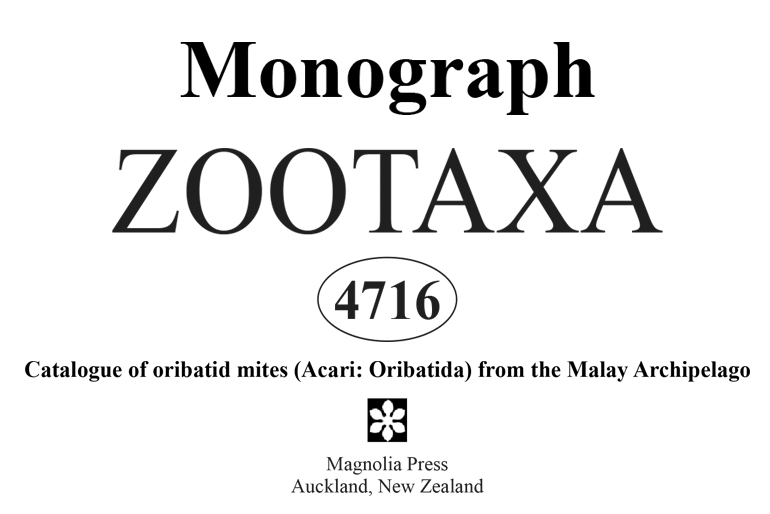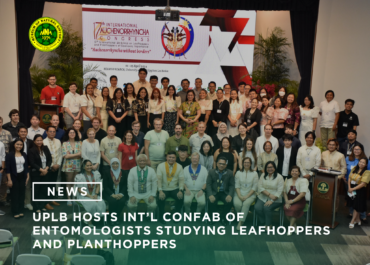
The all-important “Catalogue of oribatid mites (Acari: Oribatida) from the Malay Archipelago” has been published by taxonomy and systematics journal Zootaxa as a monograph, authored by Professor Emeritus Leonila A. Corpuz-Raros, curator of the UPLB Museum of Natural History, and fellow acarologist Dr. Sergey Ermilov of Tyumen State University, Tyumen, Russia.
Oribatids, also known as moss mites or beetle mites, are soil-living microarthropods ranging from 0.2 to 1.4 millimetres in size. Often, these mites are collectively and functionally described as “opportunistic generalists using resources from fungi to algae and decaying plant material.”
Early taxonomists have recognized the importance of these arthropods in litter decomposition but their actual role in ecology has only caught global attention in recent times. According to Dr. Raros, in the past, there were many advocacies to recycle crop residues in rice fields so there was a need to generate relevant taxonomic and ecological data on oribatids for instructional purposes.
“I took the opportunity to take on oribatid taxonomy as a main area of research in the mid-1970s,” Raros said. Today, oribatids are acknowledged to play a central role in the architecture of the soil food web.
According to Dr. Raros, their catalogue is a record of 1,030 valid species including subspecies and 6 doubtful species of oribatid mites which have been recorded from the Malay Archipelago from 1905 to 2018. The Malay Archipelago includes the countries Malaysia, Singapore, Brunei, Indonesia, East Timor and the Philippines.
To come up with this historic and monumental compilation, Dr. Raros and her co-author conducted an exhaustive review of literature for titles and species records which were published from the mid 1800’s to the end of 2018 or spanning some one and a half centuries.
“A total of 420 publications containing original descriptions of species from the Malay Archipelado region, reviews/revisions containing world keys, and catalogues/checklists of world species were consulted and listed as references,” Dr. Raros reported.
According to Dr. Raros, “the catalogue is part of a report submitted to UPLB’s Office of the Vice-Chancellor for Research and Extension (OVCRE), as her official activity as Professor Emeritus of the University of the Philippines Los Baños.”
Incidentally, Dr. Raros described a spider mite, Basiceremaeus upelbensis in 1979. This mite has a special place in the annals of UPLB as the species was named after the campus and the genus was taken from the name UP Basic Research (or UPLB Basic Research Program) a grant administered by the then UPLB Office of the Director for Research (the forerunner of the OVCRE).
With funds from that Basic Research Program, Dr. Raros conducted a taxonomic project which enabled her to amass a large volume of collections that partly formed the basis of her first records of Philippine oribatids in 1979.
“Of the 156 species I was able to list, 40 were then new to science,” Raros recalls. In this updated catalogue, the Philippines has the highest number of records at 513.
The catalogue is 240 pages, published as Zootaxa 4716 (1):001–240 and available online at https://doi.org/10.11646/zootaxa.4716.1.1.
The catalogue is a great reference for biodiversity documentation work not only in the Philippines but in the rest of archipelagic Southeast Asia. The taxonomy and systematics of the oribatid group of mites, which is important in nutrient cycling in forests and other ecosystems, will be particularly important in understanding and appreciating soil and litter ecology.
Search
Archives
Categories
- Announcement (21)
- Feature (21)
- News (141)
- Press Release (55)
- Research (4)
- Services (3)



